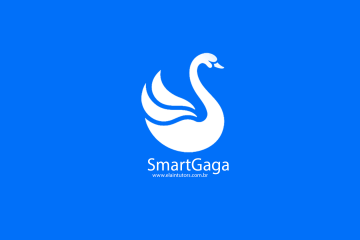In today’s fast-paced digital world, the need for seamless integration between mobile and desktop experiences has become increasingly important. With the launch of Windows 11, users are eagerly seeking ways to enhance their productivity and entertainment options. One of the most popular choices is Bluestacks, a powerful emulator that allows you to run Android applications on your Windows 11 computer. In this comprehensive guide, we will explore the features, benefits, and installation process of Bluestacks for Windows 11.
What is Bluestacks?
Bluestacks 2024 is a free Android emulator that enables users to run Android applications on their Windows-based computers. It provides a virtual Android environment, allowing you to enjoy the vast ecosystem of Android apps right on your desktop. Whether you’re a gamer looking to play mobile games on a larger screen or a professional seeking to utilize productivity apps, Bluestacks offers a seamless and intuitive experience.
Key Benefits of Bluestacks for Windows 11
- Expanded App Availability: By installing Bluestacks on your Windows 11 PC, you gain access to the extensive library of Android apps available on the Google Play Store. This means you can enjoy popular mobile games, social media apps, productivity tools, and much more, all from the convenience of your computer.
- Enhanced Gaming Experience: Bluestacks provides advanced features specifically designed for gaming enthusiasts. You can map keyboard and mouse controls to emulate touch inputs, enabling precise control and improved gameplay. Additionally, Bluestacks supports high-definition resolutions, offering stunning visuals for an immersive gaming experience.
- Seamless Synchronization: With Bluestacks, you can synchronize your Android device with your Windows 11 computer. This synchronization allows you to transfer files, access contacts, and even run apps simultaneously on both devices. It ensures a seamless workflow and enables you to switch between devices effortlessly.
- Multi-Instance Functionality: Bluestacks allows you to create multiple instances, enabling you to run different Android apps simultaneously. This feature is particularly useful when you want to multitask or test multiple applications simultaneously without any interference.
Installing Bluestacks on Windows 11
Now that we understand the benefits of Bluestacks, let’s explore the step-by-step process of installing it on your Windows 11 computer.
Step 1: System Requirements
Before installing Bluestacks, ensure that your system meets the minimum requirements:
- Windows 11 operating system
- Minimum of 4GB RAM
- 5GB free storage space
- Updated graphics drivers
Step 2: Downloading Bluestacks
- Open your preferred web browser and visit the official Bluestacks website.
- Navigate to the “Downloads” section.
- Click on the download link to initiate the download process.
Step 3: Installing Bluestacks
- Locate the downloaded setup file (typically found in the “Downloads” folder).
- Double-click on the setup file to launch the installation wizard.
- Follow the on-screen instructions and agree to the terms and conditions.
- Select the installation location and click “Install” to begin the installation process.
- Wait for the installation to complete.
Step 4: Configuring Bluestacks
- Once the installation is finished, launch Bluestacks from your desktop or start the menu.
- Configure the initial setup by signing in with your Google account.
- Follow the setup prompts to personalize your Bluestacks experience.
Congratulations! You have successfully installed Bluestacks on your Windows 11 computer. Now you can start exploring the vast world of Android apps right at your fingertips.
Optimizing Bluestacks for Superior Performance
To ensure the best possible experience while using Bluestacks on Windows 11, it’s essential to optimize the emulator for superior performance. Here are some useful tips to enhance your Bluestacks experience:
1. Adjusting Bluestacks Settings
- Open Bluestacks and click on the gear icon to access the settings menu.
- Navigate to the “Preferences” tab and customize the emulator settings according to your preferences.
- Adjust settings such as resolution, DPI, memory allocation, and CPU cores based on your system capabilities and app requirements.
2. Keeping Bluestacks Updated
- Regularly check for updates to ensure that you have the latest version of Bluestacks installed.
- Updated versions often include bug fixes, performance improvements, and new features that enhance the overall user experience.
3. Closing Unnecessary Background Applications
- Before launching Bluestacks, close any unnecessary background applications to free up system resources.
- This will ensure that Bluestacks has sufficient memory and processing power to run smoothly.
4. Enabling Virtualization
- If your system supports hardware virtualization, enabling it in the BIOS settings can significantly improve Bluestacks’ performance.
- Virtualization allows Bluestacks to utilize your computer’s resources more efficiently, resulting in a smoother and more responsive experience.
Conclusion
Bluestacks for Windows 11 is a game-changer for users looking to bridge the gap between mobile and desktop experiences. By following the installation guide and optimizing the emulator, you can unlock a world of possibilities and enjoy the best of both Android and Windows ecosystems. Embrace the power of Bluestacks and elevate your productivity, gaming, and entertainment to new heights.
So, what are you waiting for? Download and install Bluestacks on your Windows 11 computer today to embark on an incredible journey of Android apps and endless possibilities.


